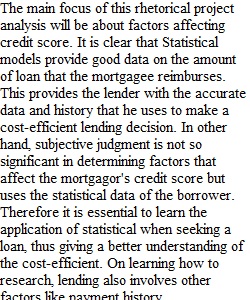


Q This reflection must be turned in to receive a grade on your Final Project and a passing grade in the class. The purpose of this Final Project Reflection is to analyze the rhetorical choices you have made to complete your final project. (Remember that rhetoric is the art of persuasive speaking or writing) Please feel free to lift directly from your previous answers in prep packets and other assorted assignments. This reflection is only going to be read by me, (and you now know me, at least a little, the way I communicate, the language and tone I use) so please make mindful rhetorical choices in the reflection to further demonstrate your knowledge of rhetorical situations. The essay must be no less than 400 words and no more than 1250 words. For example, if your final project is an essay, then your reflection essay may be closer to the 400 minimum. If your final project does not use a lot of written text (like painting a mural), then you should probably be looking closer to 1250 because the mural itself can't explain the rhetorical choices that went into making it. For each reflection, no matter the length, you must answer the following: Purpose: What was the purpose of your project? Audience: Who do you see as your audience? Here I mean your target audience. "Everyone" is not an adequate answer to this question, as your project should be aimed at a specific audience you're attempting to persuade. What choices did you make to specifically seek out and interest your audience? What rhetorical choices are you using in your project to persuade that audience? Area you leaning more heavily on pathos or ethos, for example? Why? What do you think makes this the most persuasive rhetorical choice for your audience? Message: How did you convey the message of your project? What specific choices did you make to convey that message? Did you state it directly or indirectly? Why? Speaker: What specific choices did you make to bolster your ethos? Give examples and explain. More than just finding sources, why did you pick those sources and how are you using what you learned from them to aid your credibility? Context: What choices did you make to show how your project's topic is important right now, in 2020? What "new" information did you present and how did you present that information? Genre: Why did you choose the form of your project? If an essay, why? If a Facebook page, why? If a cookbook, why a printed book instead of a blog or something else? What is the benefit of the form that you chose and what are the disadvantages? Combine all of the answers to these questions (and more if you choose) into one coherent reflection essay. Rubric MCC 4Cs AY18: Communication (1) MCC 4Cs AY18: Communication (1) Criteria Ratings Pts This criterion is linked to a Learning OutcomeCO1.18 - PURPOSE PURPOSE: Establish a clear central focus for a message which demonstrates an understanding of context, audience, and task 4 pts Proficient: Demonstrates in-depth understanding of the process or concept. Minor errors or mistakes may be present but do not impede understanding 3 pts Developing Proficiency: Demonstrates foundational understanding of the process or concept, but misconceptions impede in-depth understanding 2 pts Beginning Proficiency: Demonstrates beginning understanding of the process or concept 1 pts Not Proficient: Does not demonstrate understanding 0 pts No Submission 4 pts This criterion is linked to a Learning OutcomeCO2.18 - CONTENT CONTENT: Develop appropriate, relevant content logically sequencing ideas and/or information 4 pts Proficient: Demonstrates in-depth understanding of the process or concept. Minor errors or mistakes may be present but do not impede understanding 3 pts Developing Proficiency: Demonstrates foundational understanding of the process or concept, but misconceptions impede in-depth understanding 2 pts Beginning Proficiency: Demonstrates beginning understanding of the process or concept 1 pts Not Proficient: Does not demonstrate understanding 0 pts No Submission 4 pts This criterion is linked to a Learning OutcomeCO3.18 - LANGUAGE LANGUAGE: Apply language and/or modes of expression of a discipline in an appropriate and accurate manner to demonstrate comprehension 4 pts Proficient: Demonstrates in-depth understanding of the process or concept. Minor errors or mistakes may be present but do not impede understanding 3 pts Developing Proficiency: Demonstrates foundational understanding of the process or concept, but misconceptions impede in- depth understanding 2 pts Beginning Proficiency: Demonstrates beginning understanding of the process or concept 1 pts Not Proficient: Does not demonstrate understanding 0 pts No Submission 4 pts This criterion is linked to a Learning OutcomeCO4.18 - EXECUTION EXECUTION: Convey a message effectively 4 pts Proficient: Demonstrates in-depth understanding of the process or concept. Minor errors or mistakes may be present but do not impede understanding 3 pts Developing Proficiency: Demonstrates foundational understanding of the process or concept, but misconceptions impede in- depth understanding 2 pts Beginning Proficiency: Demonstrates beginning understanding of the process or concept 1 pts Not Proficient: Does not demonstrate understanding 0 pts No Submission 4 pts Total Points: 0 PreviousNext
View Related Questions